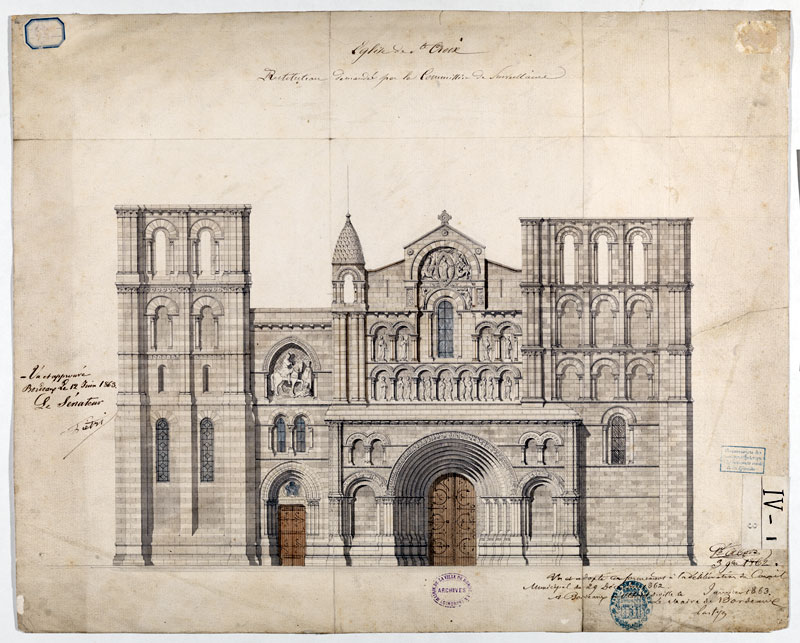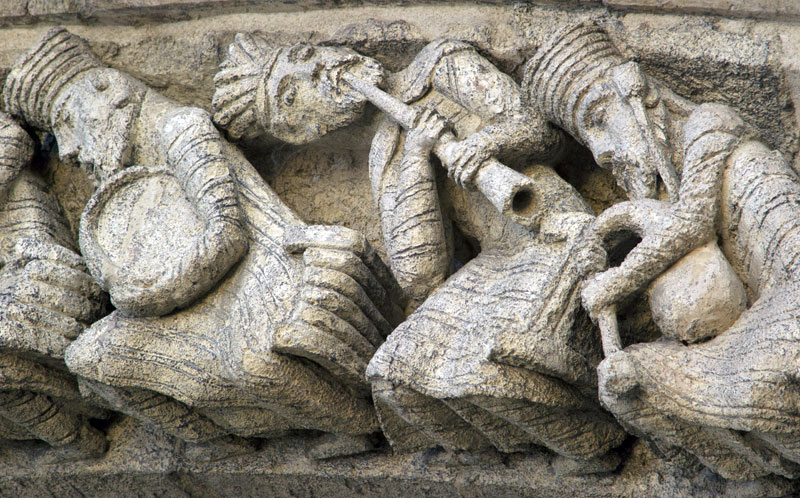Church of The Holy Cross
 Restitution de l'église. 1863
Restitution de l'église. 1863
AMBx. fi IV-I-3.
© Archives Municipales de Bordeaux. B. Rakotomanga
The Benedictine Abbey of the Holy Cross and its medieval church played an essential role in the history of the urban development of this district of Bordeaux.
In the 7th century, a group of monks founded a small religious establishment in the middle of a marsh. This first building was burned in 732. Restored, according to tradition by Charlemagne or Louis the Pious, it was destroyed again by the Normans in the mid 9th century.
At the end of the 10th century, Count William V The Good founded a Benedictine monastery on the same site. Its creation encouraged the growth of a suburb. The monks created a parish, for a population made up of artisans earning their living from river fishing and wine growing. In 1302 the City Council decided to build a third city wall that incorporated the Abbey into the urban fabric.
In the 17th century, the archbishop François de Sourdis, asked the Benedictine congregation of St. Maur to take possession of the Abbey.
The Church was closed during the French Revolution. The convent buildings and land were confiscated and allocated to a hospice for the disadvantaged and the elderly.
 Sainte-Croix avant sa restauration. AMBx.
Sainte-Croix avant sa restauration. AMBx.
© Archives Municipales de Bordeaux. B. Rakotomanga
From 1860 the architect Charles Burguet restored the Church's choir. At the same time, the spectacular and controversial restoration of the western façade was led by the architect Paul Abadie. At the end of the 19th century the hospice was moved, and the Municipal School of Fine Arts was set up in the ruins of the Abbey.
The Church of the Holy Cross is known all over the world thanks to its organ, built by Dom Bedos. This masterpiece was put back and restored at the end of the 1990s
 Vieillards musiciens de l'Apocalypse. 5e voussure (détail).
Vieillards musiciens de l'Apocalypse. 5e voussure (détail).
© Mairie de Bordeaux. F. Deval
